Stogie Spirits: Hudson New York Corn Whiskey
8 Sep 2010
If you ever wondered what effect barrel aging has on bourbon, pour yourself a few fingers of Tuthilltown’s Hudson New York Corn Whiskey. Then pour yourself an equal amount of Hudson Baby Bourbon Whiskey.
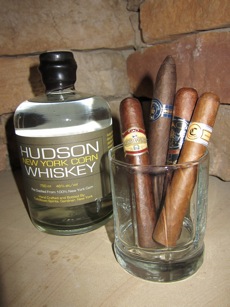 The two spirits are chemically identical (distilled from 100% New York corn) before the Baby Bourbon begins its aging process. At that point, what will become Baby Bourbon goes into new charred American oak casks, while the Corn Whiskey is bottled for sale.
The two spirits are chemically identical (distilled from 100% New York corn) before the Baby Bourbon begins its aging process. At that point, what will become Baby Bourbon goes into new charred American oak casks, while the Corn Whiskey is bottled for sale.
The difference between the final products couldn’t be more striking. The bourbon takes on a a deep copper color while corn whiskey is as clear as water.
The nose on the corn whiskey—better known by its prohibition monikers of moonshine, white dog, or white lightning—reveals a sweet bouquet of buttered corn with a hint of raspberry. It’s a surprising welcoming to a spirit with a somewhat harsh reputation.
When you’re finally ready to sip the Hudson New York Corn Whiskey, you’ll find it tastes much like it smells. There’s a hot corn fuel taste with some citrus and fried flavors. The finish is long and toasty.
Certainly it’s not as smooth or complex as a bourbon, but I find the corn whiskey surprisingly pleasant, even straight-up. It makes an excellent whiskey sour, too. I expected more harshness from this white lightning, which I always thought of as an ingredient to be hidden in a punch and not to be savored on its own, but it proved to be an excellent spirit, especially with a fine cigar.
As for that cigar, I am pleased to say I found a perfect accompaniment to that rare, full-flavored, Connecticut-wrapped smoke. I sampled my first San Lotano Connecticut by A.J. Fernandez while tasting the Hudson Corn Whiskey. It is an excellent pairing. Other cigars that would go well include the HC Connecticut by Xikar and the Berger & Argenti Entubar.
I strongly encourage bourbon fans to do as I did and try it side by side with the Hudson Baby Bourbon, for a rare look at what fine whiskey tastes like both before and after years of aging. But even if you skip the finished bourbon, the Hudson New York Corn Whiskey is well worth a try, particularly with a fine cigar.
photo credit: Stogie Guys

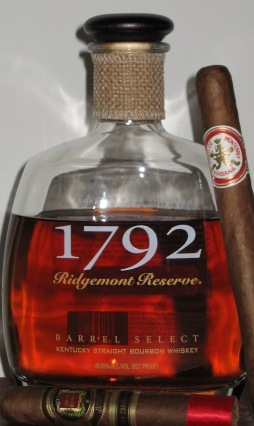 It’s hard to think of bourbon without thinking of Kentucky—or vice versa, for that matter. So it stands to reason that Ridgemont Reserve should commemorate the year the Bluegrass State became official, as long as the spirit in question is up to the task of representing the motherland of bourbon. That’s a tall order.
It’s hard to think of bourbon without thinking of Kentucky—or vice versa, for that matter. So it stands to reason that Ridgemont Reserve should commemorate the year the Bluegrass State became official, as long as the spirit in question is up to the task of representing the motherland of bourbon. That’s a tall order.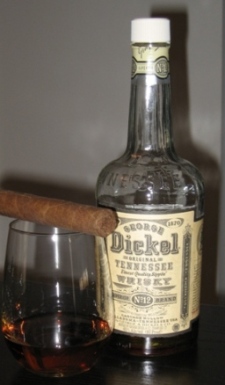 The eponymous company was founded when George Dickel, a successful merchant from Nashville, established a distillery six miles northeast of Tullahoma in 1870. He called his product “whisky†instead of “whiskey†because, according to the Dickel
The eponymous company was founded when George Dickel, a successful merchant from Nashville, established a distillery six miles northeast of Tullahoma in 1870. He called his product “whisky†instead of “whiskey†because, according to the Dickel 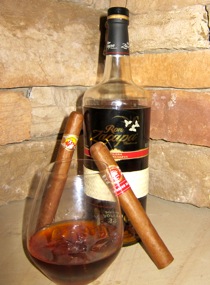 The
The 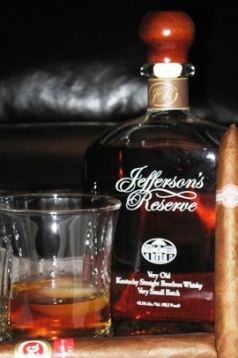 Crafted in Bardstown—the Mecca of bourbon—Jefferson’s Reserve and Sam Houston bourbons are made in “very small batches†from corn, malted barley, and rye. The distiller “marries a mere 8-12 barrels of various ages to produce the best tasting bourbon possible…â€
Crafted in Bardstown—the Mecca of bourbon—Jefferson’s Reserve and Sam Houston bourbons are made in “very small batches†from corn, malted barley, and rye. The distiller “marries a mere 8-12 barrels of various ages to produce the best tasting bourbon possible…â€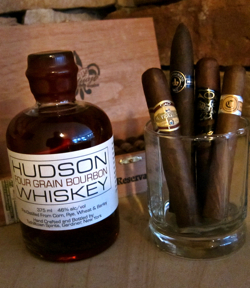
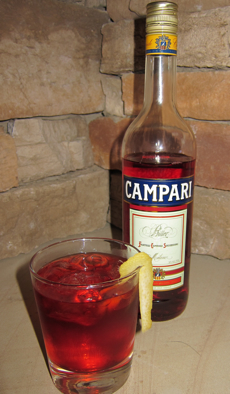 Between Steve Zissou (played by Bill Murray)
Between Steve Zissou (played by Bill Murray)  Patrick Ashby
Co-Founder & Editor in Chief
Patrick Ashby
Co-Founder & Editor in Chief Patrick Semmens
Co-Founder & Publisher
Patrick Semmens
Co-Founder & Publisher George Edmonson
Tampa Bureau Chief
George Edmonson
Tampa Bureau Chief